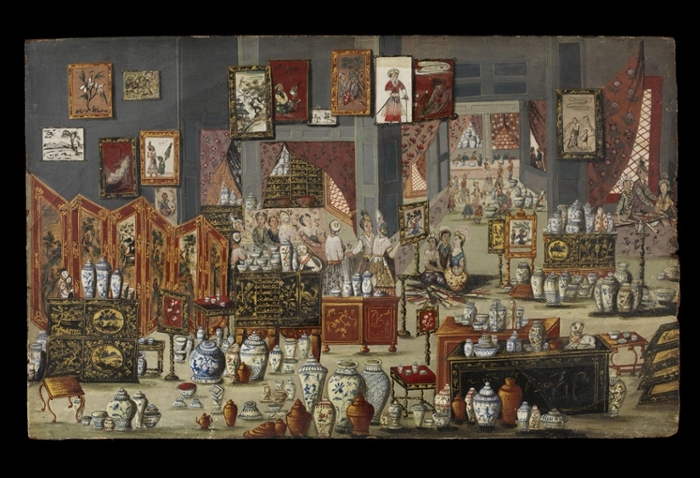Lecture
Kress Talks with Juliet Huang and Christine Quach
- Date
- Monday 3 November 2025
- Time
- Address
-
Academy Building
Rapenburg 73
2311 GJ Leiden - Room
- Teldersauditorium (follow online via livestream on this page)
Livestream
Unable to join in person? This event will be streamed on this page.
Live stream
No video image? Please refresh the page to re-establish the connection.
Juliet Huang
Unfolding fans in the 17th-century Netherlands
Folding fans are frequently used as illusionistic devices in 17th-century Dutch paintings, blurring the boundaries between the painting and the beholder’s space. Current studies on surviving 17th-century fans focus on identifying subjects on painted fan leaves, but in this talk I would like to consider these fans’ interactive nature. Fans painted in the Netherlands and Chinese exported fans for the Dutch market from the late 17th and early 18th centuries demonstrate how the fans are strategically designed to mobilise the beholder’s gaze and body, and how materiality confounds visuality.
I argue that the dynamic process of seeing, which involves the hand’s participation in unfolding, is derived from interactions between early modern Dutch and Chinese visual and architectural theories and practices. Special consideration is given to a group of ivory fans painted with porcelain or imitating ceramic surfaces. These examples illustrate not only the desire, taste, and power of Dutch female collectors of EurAsian artefacts but also how portable commodities such as fans and porcelain staged cross-cultural encounters.

Christine Quach
The Life and Times of Women and their Boxes
Time is a valuable commodity in any period and the ways in which people spend their time on this earthly plane often determine the trajectory of their life. Women in the 17th century Dutch Republic had more limited choices in how they spent their time as moralistic conduct books dictated the best use of their time would be relegated to domesticity and motherhood. Yet, through daily rituals with certain objects, women had a degree of temporal agency that rendered their everyday roles more complex than initially prescribed by period norms.
My talk explores the temporal experiences of early modern Dutch women in the domestic setting as mediated by their personal boxes. The use of these ubiquitous household items may form a daily routine but their acquisitions during key milestones in a woman’s life imbue them with temporal significance at a micro and macro level. By examining the material and visual representations of women and their boxes, I argue that the box’s ability to contain, conceal, protect, and move contributes to its capacity to manipulate temporal experiences at a metaphysical level within the domestic interior.

